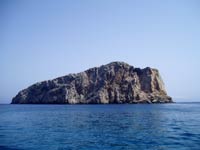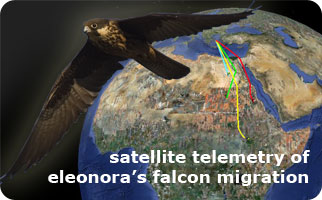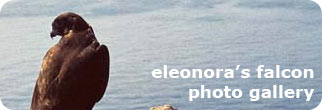Code of conduct on islets: a useful guide for those handling floating vehicles
 Small uninhabited islets are fragile ecosystems of profound value to wildlife. Despite their isolation, however, they have become accessible to all those aboard a boat. During our visit to an islet, we may unintentionally disturb wildlife. If you board boats or other floating vehicles, we ask you to keep this leaflet and remember the following suggestions.
Small uninhabited islets are fragile ecosystems of profound value to wildlife. Despite their isolation, however, they have become accessible to all those aboard a boat. During our visit to an islet, we may unintentionally disturb wildlife. If you board boats or other floating vehicles, we ask you to keep this leaflet and remember the following suggestions.
There are many uninhabited islets in the Aegean incorrectly considered deserted and dry places, without life. In reality, these islets belong to the most valuable and least known parts of Greek nature.
 Their profound importance can largely be attributed to their long-term isolation that has resulted in the creation of unique ecosystems and the evolution of endemic species (i.e. those found nowhere else). Their importance is furthermore to be attributed to the absence of humans and terrestrial predators, something that makes these islets safe shelters for many rare and protected species that nest on the ground. Characteristic examples of such bird species are the seabirds, but also the Eleonora's falcon, possibly the most significant bird of Greece, since it is in Greece that about 3/4 of the world's population breeds. Thus, the degradation of the islets implies an irreplaceable loss for biodiversity and our natural heritage.
Their profound importance can largely be attributed to their long-term isolation that has resulted in the creation of unique ecosystems and the evolution of endemic species (i.e. those found nowhere else). Their importance is furthermore to be attributed to the absence of humans and terrestrial predators, something that makes these islets safe shelters for many rare and protected species that nest on the ground. Characteristic examples of such bird species are the seabirds, but also the Eleonora's falcon, possibly the most significant bird of Greece, since it is in Greece that about 3/4 of the world's population breeds. Thus, the degradation of the islets implies an irreplaceable loss for biodiversity and our natural heritage.
The islets that are of most significance importance to the birds have been designated as Zones of Special Protection in the Natura Network 2000, based on the European Directives on the conservation of birds and their habitats. This network comprises Europe's most significant natural biotopes and aims to ensure the long-term survival of the rarest and most threatened species and habitats, through measures and policies that promote alternative forms of regional development, such as agro tourism, biological agriculture and livestock breeding.
By law, many islets have been placed under special protection and management. Their conservation is not only a necessity, but also an obligation for all of us.
Our presence on the islets might cause a disturbance that is frequently especially harmful to birds, since it leads to a decrease of their breeding success. This occurs because adult birds, when disturbed, temporarily leave their nests, thus exposing their chicks to weather conditions and predators. Intense disturbance can even lead to a colony's permanent desertion. Thus, islets have to be approached with additional attention.
However, the presence of pets on islets is also dangerous, since the birds' nests are located on the ground and constitute easy prey. Just the sight of a dog or a cat for example can become the cause for an automatic desertion of a whole colony of Audouin's Gulls (Larus audouini).
Mice and rats, constituting a major threat to eggs and chicks, have unintentionally already been transported by mankind to most islets The few islets free of rodents are especially valuable since they offer rare birds unique shelter.
It is impossible to monitor the access of recreational boats to islets. Thus, the most important tool in the protection of birds is the information of visitors. Please following the subsequent suggestions and contribute to the conservation of the Aegean's unique areas. When visiting uninhabited islets, it is important to always remember:
- Birds nest on islets from April to October. If while approaching an islet during this season you see birds rising into the air, it is recommendable that you not land. If you disembark nonetheless and see that birds are nesting, you need to leave as soon as possible.
- Do not allow animals to go ashore, even if they are kept on a leash
- Mice and rats are common stowaways, swimming ashore during the night. For this reason, it is recommended that you do not spend the night close to the islets' shores, except in emergencies.
- Do not light fires and do not keep strong lights on during the night while close to the islets. This can disorientate seabirds returning to their nests during the night.
- Do not remove and do not introduce animals or plants from/to the islets
There are many ways we can enjoy islets without harming wildlife. The avoidance of disturbance and of the islets' degradation is the responsibility of all of us.










